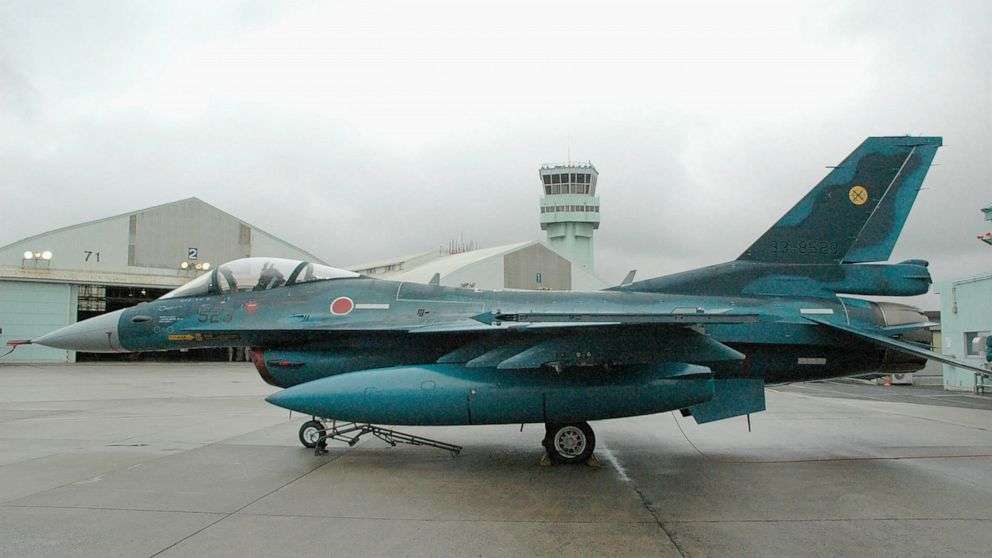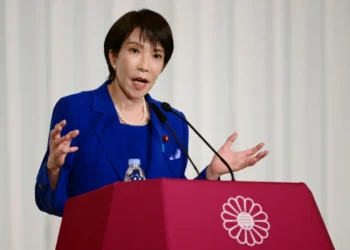Japan announced on Friday, December 9, 2022 that it will jointly develop its next-generation fighter jet with the U.K. and Italy.
Japan seeks to expand defense cooperation beyond its traditional partner, the United States.
The Mitsubishi F-X fighter jet will replace the old fleet of F-2s that Japan previously developed with the United States.
The nations will merge their current plans for development of next-generation planes to produce the new combat aircraft for deployment in 2035.
The deal will give Japan greater support in countering China’s growing assertiveness and allow Britain a bigger presence in the Indo-Pacific region.
The announcement came four days after Prime Minister, Fumio Kishida set spending targets aimed at building up Japan’s military capability, including a huge boost in defense spending over the next five years.
To meet the five-year spending total of 43 trillion yen ($316 billion), the government will need an extra 4 trillion yen ($30 billion) in defense spending annually. Of that, a quarter is to be funded through tax increases.
To counter growing threats from China and North Korea, Japan has been expanding its defense partnerships with countries in the Indo-Pacific, including Australia, with Southeast Asian countries and with Europe.
Japanese Defense Ministry officials expressed that Japan’s new security strategy allows it a bigger strike capability and it hopes to expand joint exercises in Australia, including firing drills that are difficult to conduct at home.
Japan’s Defense Ministry revealed that the new aircraft will be a multi-role stealth fighter superior to the F-35 and the Eurofighter, with advanced censors and networking.
The warplane is expected to replace 94 F-2s in Japan, 144 Eurofighters in the U.K. and 94 Eurofighters in Italy.
Further details, including production targets, development cost and aircraft design, are still being discussed.
Kishida’s governing Liberal Democratic Party wants to further relax restrictions on Japanese arms exports and technology transfers so the jointly developed new fighters can be exported.
Japan initially considered Lockheed Martin as its partner in developing the next-generation fighter.
However, it dropped the plan, reportedly due to the U.S. company’s reluctance to share expertise key to stealth technology.
Japan and the United States instead will cooperate in “autonomous systems capabilities, which could complement Japan’s next fighter program.”
Britain and Italy were chosen as partners after Japan ensured they would share key information allowing each country to make its own decisions on repairs, officials said.
The Joint Fighter Development Reflects Need To Advance In Defense Technologies
British Prime Minister Rishi Sunak disclosed in a statement that the joint fighter development reflects the need to stay at the cutting edge of advancements in defense technologies to outpace “those who seek to do us harm.”
The security of the Euro-Atlantic region and the Indo-Pacific are “indivisible,” he iterated.
Sunak’s office said the ambition was to make a jet “enhanced by a network of capabilities such as uncrewed aircraft, advanced sensors, cutting-edge weapons and innovative data systems.”
Under the fighter jet agreement, Japan’s Mitsubishi Heavy Industries will partner with British defense contractor BAE Systems PLC. Italy’s Leonardo S.p.A will be a key player in the project.
Japan’s IHI, Britain’s Rolls Royce and Italy’s Avio Aero will be in charge of its engine, while Mitsubishi Electric Co., Leonardo U.K. and Leonardo S.p.A. will work on avionics.
The leaders of the three countries said in a joint statement that the project, called “the Global Combat Air Program,” will deepen defense ties, science and technology collaboration, help integrate supply chains and further strengthen the defense industry.
READ ALSO: Banking Sector Clean-up: Former BoG Staff And UT Bank Executives Face Several Charges By Court






















